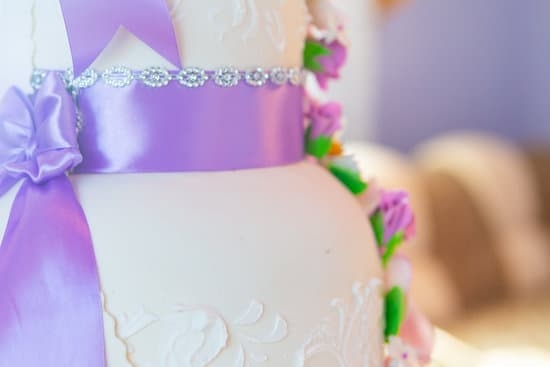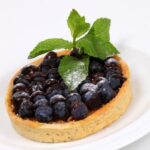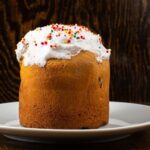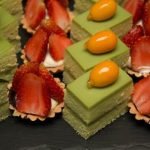Edible flowers for cake decorating have become a popular and captivating trend in the world of baking. These delicate blossoms not only add a visually stunning element to cakes but also bring a unique and natural flavor profile to your creations. From weddings to birthdays, edible flowers are a versatile and elegant way to enhance the aesthetic appeal of any cake.
The use of edible flowers in cake decorating is an art form that requires skill, creativity, and attention to detail. Whether you are a seasoned baker or just starting out, incorporating these beautiful blooms into your designs can elevate your cakes to new heights. With the right knowledge and techniques, you can create show-stopping cakes that will impress and delight your friends, family, or clients.
In this article, we will delve into the world of edible flowers for cake decorating, providing you with tips and tricks on how to use them effectively, a guide on selecting the perfect blooms for your cakes, best practices for preparation, top flower recommendations, creative design ideas, seasonal guides, and important safety precautions. Get ready to unlock the beauty and potential of edible flowers in your cake decorating endeavors.
The Art of Using Edible Flowers in Cake Decorating
Edible flowers have become a popular and elegant way to enhance cake designs, adding a touch of beauty and sophistication to any dessert. The art of using edible flowers in cake decorating requires some tips and tricks to ensure that your creations not only look stunning but are also safe for consumption.
Here are some tips for effectively using edible flowers in cake decorating:
- Choose organic edible flowers to avoid pesticides or chemicals on the petals.
- Wash the flowers gently with water and allow them to air dry before placing them on the cake.
- Remove the pistils, stamens, and sepals from the flowers as they might have a bitter taste or be harmful if consumed.
To ensure that your edible flower decorations shine on your cakes, consider these tricks:
- Use small blossoms such as violets or pansies to add delicate details to your designs.
- Experiment with different placement styles such as cascading down the side of the cake or creating a floral wreath on top.
- Create a contrast by pairing colorful edible flowers with a simple white frosting or cake base.
With these tips and tricks in mind, you can elevate your cake decorating skills by incorporating beautiful and safe edible flowers into your designs. Whether you are preparing a birthday cake, wedding cake, or any other special occasion dessert, adding edible floral elements will surely impress your guests and make your creations stand out.
A Guide to Selecting the Perfect Edible Flowers for Your Cakes
When it comes to selecting the perfect edible flowers for cake decorating, there are a few key factors to keep in mind. From color to flavor, choosing the right blooms can make all the difference in creating a visually stunning and delicious masterpiece. Here is a guide to help you navigate the world of edible flowers for your cakes.
Color Coordination
One of the most important aspects of selecting edible flowers for cake decorating is color coordination. Consider the color scheme of your cake and choose flowers that complement or contrast with it effectively. For example, vibrant orange marigolds can provide a pop of color on a white cake, while delicate pink rose petals can add a romantic touch to a pastel-colored dessert.
Flavor Profile
Not only do edible flowers contribute to the visual appeal of your cake, but they can also enhance its flavor profile. Some popular options like lavender, chamomile, and hibiscus offer unique tastes and aromas that can elevate your culinary creation. Experiment with different combinations to discover which flavors work best with your chosen cake recipe.
Seasonal Availability
Another essential factor to consider when selecting edible flowers for cake decorating is their seasonal availability. Different blooms thrive during specific times of the year, so be sure to choose flowers that are in season for optimal freshness and quality.
Research local flower markets or nurseries to find out which varieties are at their peak during the time you plan to bake your cake. By following these guidelines, you can ensure that the edible flowers you select will not only enhance the visual appeal of your cakes but also contribute delicious flavors that will impress your guests.
Best Practices for Preparing Edible Flowers for Cake Decorating
When it comes to using edible flowers for cake decorating, preparation is key to ensuring that they not only look stunning but are also safe to consume. Before incorporating any flowers into your cake design, it is important to follow best practices for preparing these delicate decorations.
One essential step in preparing edible flowers for cake decorating is ensuring that the flowers are actually edible and free from any chemicals or pesticides. It is highly recommended to source your flowers from organic suppliers or trusted sources that specialize in providing edible blooms. Additionally, make sure to thoroughly wash the flowers before use to remove any dirt, bugs, or pollen that may be present.
Another important practice when preparing edible flowers for cake decorating is to remove all non-edible parts of the flower. This includes removing pistils, stamens, and sepal bases as these parts can have a bitter taste and may not be visually appealing on a cake. By carefully plucking just the petals or whole flower heads, you can ensure a beautiful and safe decoration for your cakes.
Lastly, consider the size and shape of the edible flowers when preparing them for cake decorating. Some flowers may need to be trimmed or cut into smaller pieces to fit the design of your cake. Be mindful of how you arrange the flowers on your cake, taking care not to overcrowd the design and allowing each bloom to shine individually.
| Edible Flower | Best Use |
|---|---|
| Roses | Perfect for romantic designs |
| Lavender | Great for adding a subtle floral flavor |
| Pansies | Adds a pop of color and charm |
Top 5 Edible Flowers That Are Perfect for Cake Decoration
Edible flowers have become increasingly popular in the world of cake decorating, adding a touch of elegance and natural beauty to any confection. When it comes to selecting the perfect edible flowers for your cakes, there are several options that stand out for their visual appeal, taste, and versatility. Here are the top 5 edible flowers that are perfect for cake decoration:
1. Roses: Known for their romantic symbolism and delicate petals, roses make a stunning addition to any cake. Whether you choose classic red roses for a traditional look or opt for pastel-colored varieties for a more whimsical design, these edible flowers are sure to impress.
2. Lavender: With its lovely fragrance and vibrant purple color, lavender is a popular choice for adding a touch of sophistication to cakes. Not only do lavender flowers look beautiful as decorations, but they also infuse a subtle floral flavor into your baked goods.
3. Violets: Violets come in various shades of purple and have a sweet, slightly floral taste that complements many dessert recipes. These dainty flowers can be used whole or as individual petals to create intricate designs on cakes.
4. Calendula: Also known as marigold, calendula flowers come in bright hues of orange and yellow, making them ideal for adding a pop of color to cakes. These edible flowers have a slightly tangy flavor, which can provide an interesting contrast to sweeter cake flavors.
5. Nasturtiums: Nasturtiums feature vibrant blossoms in shades of red, orange, and yellow, offering a playful and cheerful aesthetic to cake decorations. The peppery flavor of nasturtium flowers adds an unexpected twist to desserts and can create unique flavor profiles when paired with different ingredients.
By incorporating these top 5 edible flowers into your cake decorating repertoire, you can elevate your creations with eye-catching colors, textures, and flavors that will leave your guests impressed.
| Edible Flower | Description |
|---|---|
| Roses | Classic and romantic choice with delicate petals. |
| Lavender | Fragrant purple flower that adds sophistication. |
| Violets | Dainty purple blossoms with sweet floral taste. |
Creative Ways to Incorporate Edible Flowers in Cake Designs
Using edible flowers in cake decorating is not only a delicate and beautiful touch, but it also adds a unique element to your creations. There are various creative ways to incorporate these floral delights into your cake designs, making them stand out from the rest.
One popular method is to place whole edible flowers strategically on top of the cake for a simple yet elegant look. Edible flowers such as pansies, violets, and roses can be placed individually or grouped together to create a stunning visual impact.
Infusing Edible Flowers Into Cake Batter
Another creative way to incorporate edible flowers in cake designs is by infusing them into the cake batter itself. This technique not only adds a subtle floral flavor to the cake but also gives it a beautiful appearance when sliced.
To infuse edible flowers into the batter, make sure to select flowers that are safe for consumption and have a mild flavor that complements the cake’s base flavors. Delicate petals of flowers like lavender, chamomile, or hibiscus can be gently stirred into the batter before baking for a vibrant and aromatic result.
Creating Edible Flower Petal Confetti
For a whimsical and colorful touch, consider creating edible flower petal confetti to sprinkle on top of your cakes. Simply pluck the petals from edible flowers like marigolds, nasturtiums, or borage and mix them together for a vibrant mix of colors and shapes.
The confetti can be lightly pressed onto frosting or whipped cream to add texture and visual interest to your cake design. This simple yet effective technique can give your cakes a playful and festive feel that is perfect for celebrations and special occasions.
With these creative ways to incorporate edible flowers in cake designs, you can elevate your cake decorating skills and create stunning masterpieces that are as delightful to look at as they are delicious to eat.
Whether you choose to use whole flowers as decorative accents, infuse them into the batter for added flavor, or create petal confetti for a fun twist, incorporating edible flowers into your cakes will surely impress your guests and leave them craving more of your floral-inspired creations.
Edible Flowers for Every Season
When it comes to cake decorating, using edible flowers can elevate the presentation of your desserts to a whole new level. Not only do they add a touch of elegance and beauty, but they also provide a unique and natural element to your cakes. One way to make the most out of edible flowers for cake decorating is by selecting blooms that are in season.
By incorporating seasonal flowers into your designs, you can enhance the overall theme and aesthetic of your creations. Here is a seasonal guide to help you choose the perfect edible flowers for each time of the year:
- Spring:
- Summer:
During the summertime, vibrant and bold edible flowers such as roses, hibiscus, sunflowers, and marigolds are popular choices. These colorful blooms can bring a splash of warmth and energy to your cake designs, capturing the essence of summer. - Fall:
For autumn cakes, consider using rich and earthy edible flowers like chrysanthemums, dahlias, nasturtiums, or calendulas. These warm-toned flowers can complement fall-themed cakes beautifully with their deep hues and rustic charm.
In the springtime, opt for delicate and pastel-colored edible flowers like violets, lavender, cherry blossoms, and pansies. These dainty blooms will add a touch of freshness and lightness to your cakes, perfect for celebrating the blooming season.
By carefully selecting edible flowers that align with each season’s color palette and vibe, you can create stunning cake decorations that capture the essence of each time of year. Whether you are baking for a special occasion or simply wanting to experiment with new decorating techniques, incorporating seasonal blooms into your designs will surely impress your guests and elevate your cake decorating skills.
Explore different combinations and arrangements to find what works best for each season and let your creativity bloom with every dessert creation.
Remember to always source your edible flowers from reputable suppliers or grow them yourself in pesticide-free environments to ensure safety when using them in cake decorating. With this seasonal guide on hand, you can confidently incorporate fresh blooms into your cakes throughout the year, adding an extra dash of beauty and flavor to your sweet creations. So go ahead and explore the wonderful world of using edible flowers for cake decorating in every season.
Safety and Precautions When Using Edible Flowers in Cake Decorating
When it comes to using edible flowers for cake decorating, it is important to prioritize safety and take necessary precautions to ensure that the flowers are safe for consumption. While edible flowers can add a beautiful and unique touch to your cakes, it is crucial to be aware of potential risks associated with using them in food preparation.
One of the key safety measures when using edible flowers is to make sure that they are indeed edible and free from any harmful chemicals or pesticides.
Before decorating your cakes with edible flowers, it is recommended to purchase them from reputable sources such as specialty grocers or farmers’ markets that offer organic and pesticide-free options. It is also essential to properly clean the flowers by gently washing them with water to remove any dirt, insects, or residues. Additionally, always remember to inspect the flowers carefully for any signs of decay or discoloration before using them in cake decorating.
Another important precaution when using edible flowers for cake decoration is to consider any potential allergies or sensitivities that you or your guests may have. Some individuals may have allergic reactions to certain types of flowers, so it is advised to inquire about any allergies before incorporating edible flowers into your cakes.
By being cautious and mindful of safety measures, you can enjoy the beauty and elegance of using edible flowers in your cake designs while ensuring a safe and enjoyable culinary experience for everyone.
Conclusion
In conclusion, the use of edible flowers for cake decorating not only adds a visually stunning element to your creations but also elevates the overall aesthetic appeal of your cakes. By incorporating these delicate and vibrant flowers into your designs, you can truly take your cake decorating skills to the next level. The versatility of edible flowers allows for endless creativity and experimentation, making each cake unique and special.
Whether you are a seasoned baker or just starting out in the world of cake decorating, edible flowers offer a wonderful opportunity to showcase your artistry and passion for baking. From simple arrangements to intricate designs, the possibilities are endless when it comes to incorporating these natural beauties into your cakes. With the right tips and techniques, you can create show-stopping desserts that will impress any guest or customer.
As you continue on your journey of exploring the beauty and trend of using edible flowers for cake decorating, remember to always prioritize safety and precautions. It is essential to properly select, prepare, and handle edible flowers to ensure that they are safe for consumption. By following best practices and guidelines, you can confidently enhance your cakes with stunning edible flowers for a truly unforgettable dessert experience.
Frequently Asked Questions
What Flowers Are Edible for Cake Decorating?
There are several flowers that are edible and safe for cake decorating, such as roses, violets, pansies, marigolds, lavender, and nasturtiums. These flowers can add a beautiful and unique touch to cakes.
What Type of Flowers Are Safe to Put on a Cake?
When it comes to putting flowers on a cake, it is crucial to ensure that they are edible and not toxic or treated with chemicals. Edible flowers like roses, chamomile, daisies, and orchids are generally safe to use for cake decorations.
Can You Put Real Flowers on a Cake for Decoration?
It is possible to put real flowers on a cake for decoration if the flowers are edible and free from pesticides or chemicals. However, it is essential to ensure that the flowers have not been sprayed with any harmful substances before using them on a cake.

Welcome to our cake decorating blog! My name is Destiny Flores, and I am the proud owner of a cake decorating business named Cake Karma. Our mission is to provide delicious, beautiful cakes for all occasions. We specialize in creating custom cakes that are tailored specifically to each customer’s individual needs and tastes.





